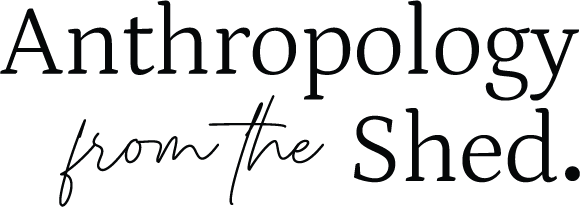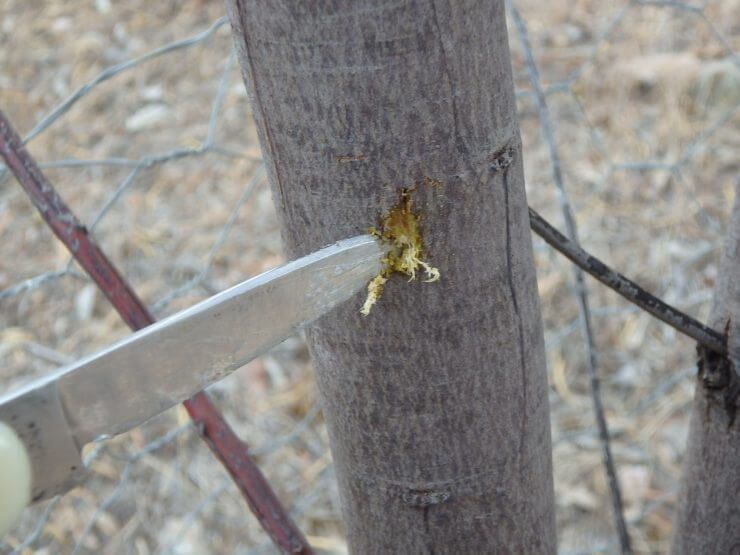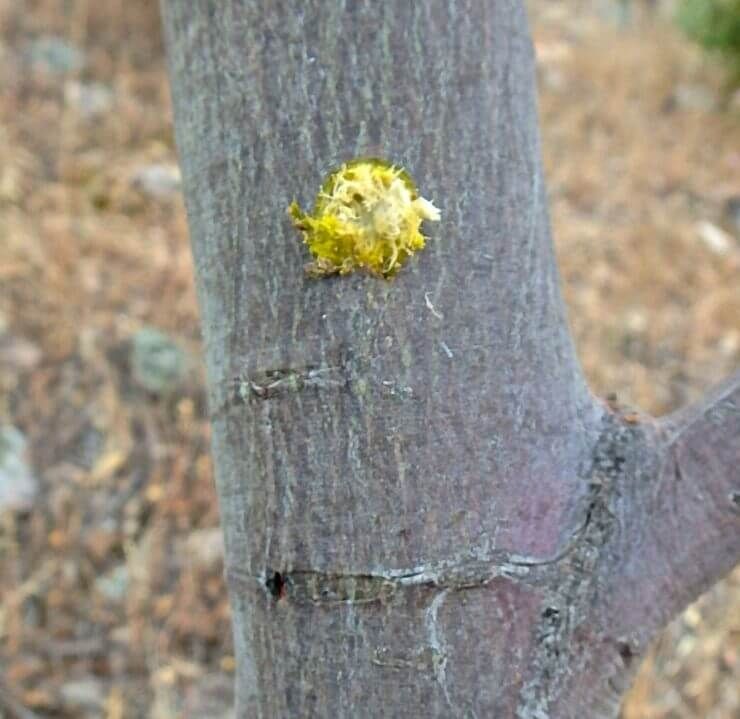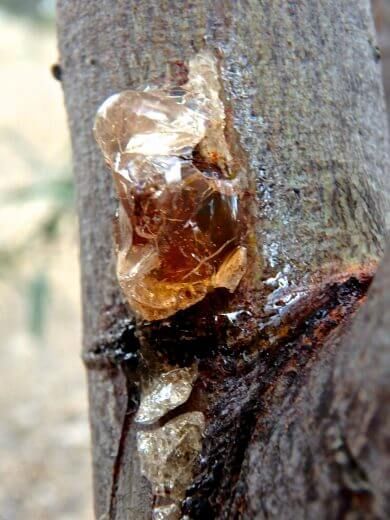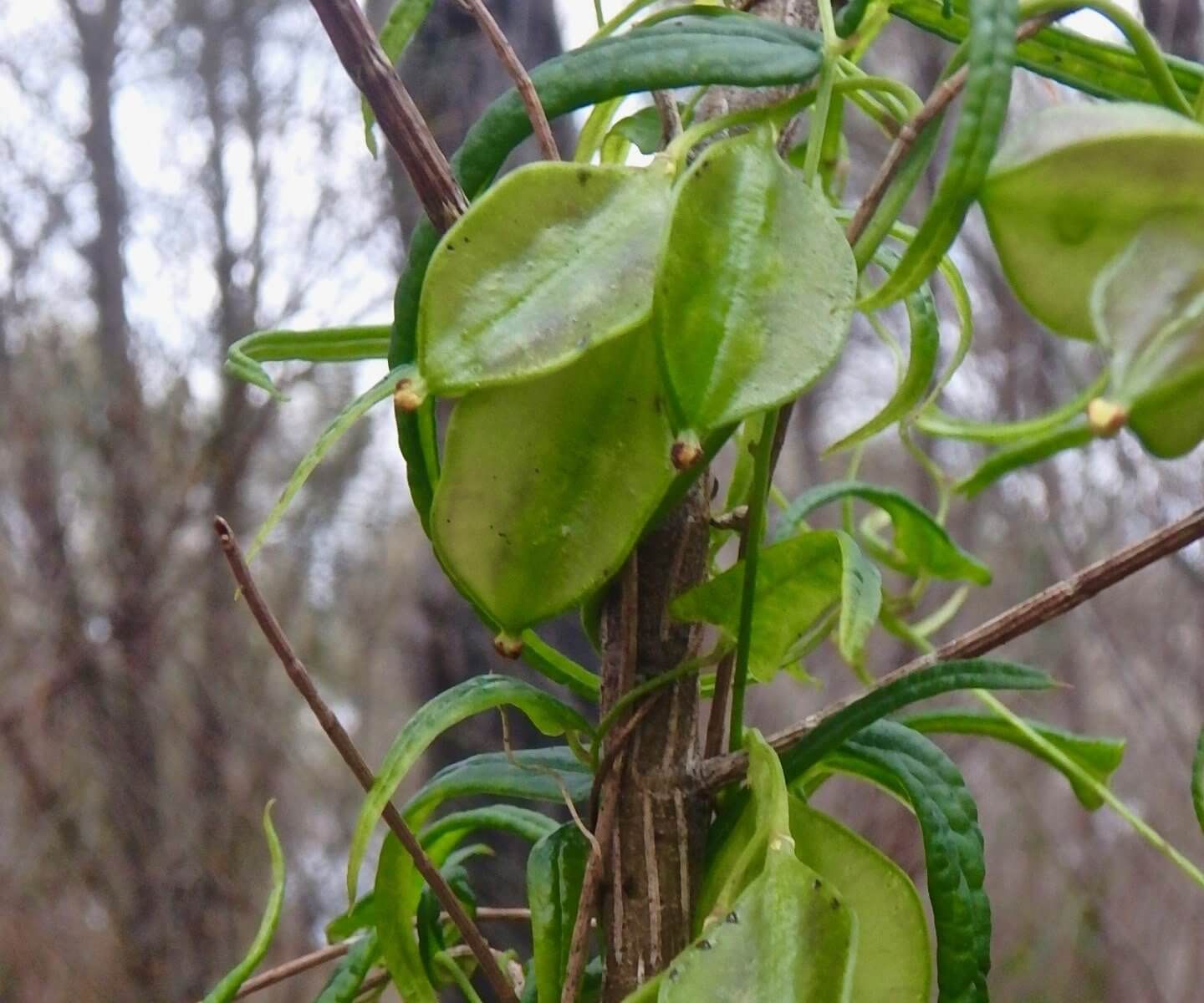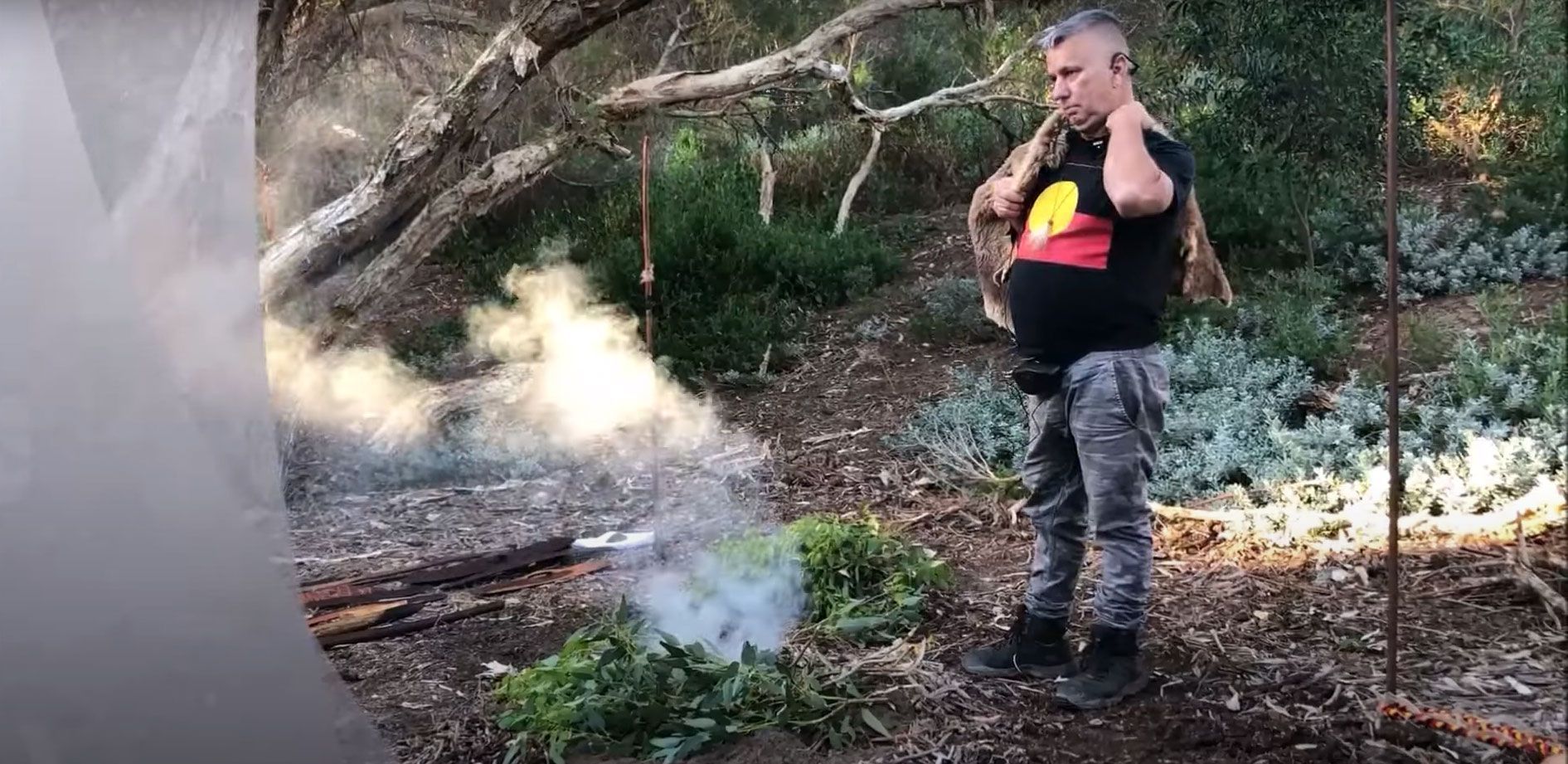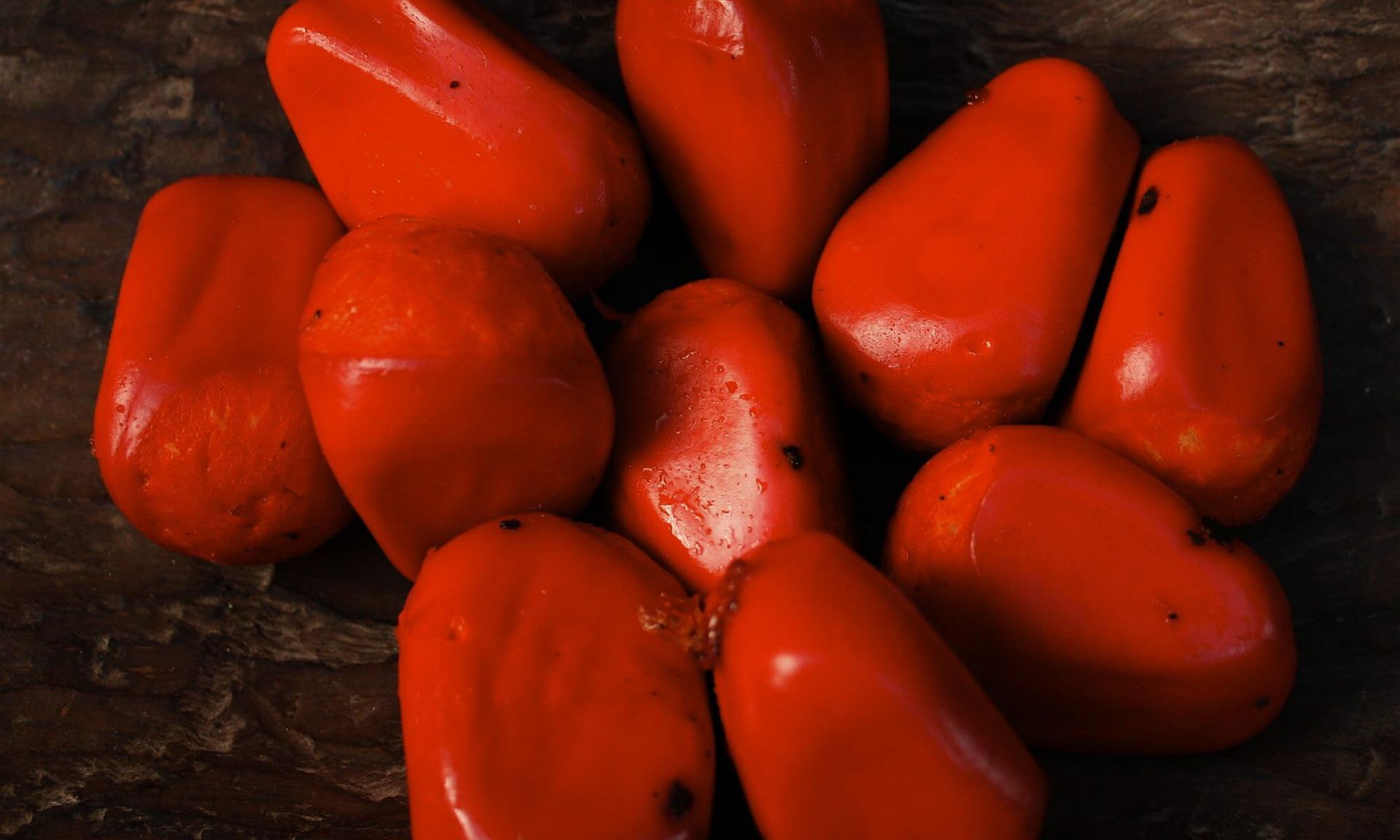Acacia gum experiment
As the natural production of Acacia gum can be highly variable depending on climatic conditions and insect predation, we never doubted that indigenous people in southwestern Australia would have artificially wounded gum-producing Acacia to ensure a dependable supply during the gum (“galyang”) season in late spring/ early summer as this was an important food, food additive (bulking agent) and medicine.
We wonder why, when gum Arabic was such a commercially profitable business in the early days of the Swan River colony, a scientist like Drummond who was heavily involved in promoting the local gum trade did not investigate the indigenous means of producing and procuring wattle gum?
It is well documented that human agency was and still is involved in accelerating the production of gum resin (gum Arabic) for commercial and subsistence purposes in Africa.
We conducted an experiment at our Toodyay property to test the possibility of producing a dependable quantity of gum exudate by artificially wounding the trunks of several young Acacia microbotrya.
Experiment
Our aim was to test whether it was possible to produce a gum exudate from Acacia microbotrya by inflicting a minor wound to the upper part of the tree trunk. Small incisions were made (see Figures 1 & 2) using a pocket knife into the upper part of the trunks of 4 young Acacia microbotrya trees.
incisions into the trunks were made on Thursday 26th October 2017
These 4 test trees were re-examined on Monday 13th November 2017.
-
Button
Fig 1: Acacia gum experiment – making a deep incision 26 Oct 2017
-
Button
Fig 2: Acacia gum experiment – the same wound site 26 Oct 2017
-
Button
Fig 3: Acacia gum, still soft & sticky inside (produced from incision shown in Figs 1 & 2). Photo by Ken Macintyre 13th November 2017.
-
Button
Fig 4: Acacia gum, soft & sticky inside, exuding after incision. Photo by Ken Macintyre 13th Nov 2017.
Results
Three of the four trees that were artificially wounded were found to exude gum (see Figures 3 & 4). One tree did not exude any gum because the wounding was too superficial to have any effect. The fourth tree exuded only a small amount of gum as the incision was not very deep.
We ask ourselves, why aren’t there more experiments being conducted on Aboriginal bush foods of southwestern Australia to give insights into how indigenous people managed their land and food resources. We rely so heavily on the largely unscientific and Western-centric biased records of early explorers and settlers for our information even to this day. We can only imagine that hunter-gatherer food security was not left to the whims of nature but Aboriginal people where possible routinely managed their natural food resources to ensure their survival. For more information on the traditional useage of Acacia (wattle) gum by Noongar people, see our paper on “The Sweet Gum.”
